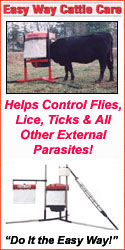Ooops!
Sorry, the requested news story could not be found.
Other National & World Ag News Headlines
- AFBF Study: Farmers Urgently Need Economic Assistance
- U.S. Soybeans Set for First Chinese Shipment Since May
- Cranberry Production Forecast to Land Near Five-Year Average
- Tyson Foods to Close Nebraska Beef Processing Plant
- Deere Reports Lower Sales, Net Income During 2025
- Ag Secretary Leads Largest USDA Trade Mission to Mexico
- Land O'Lakes, Microsoft Working to Accelerate AI in Agriculture



